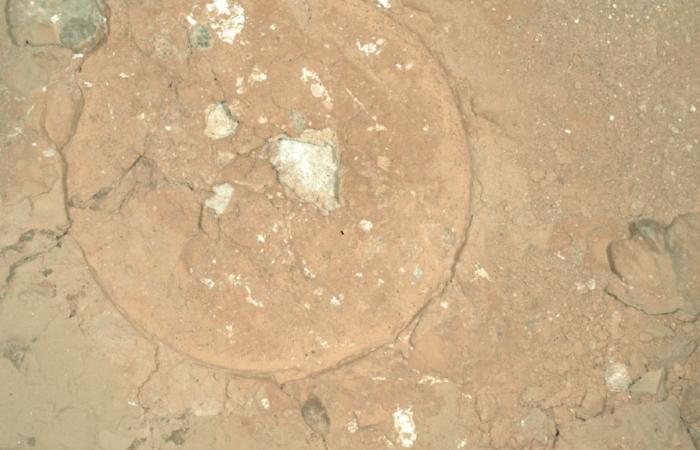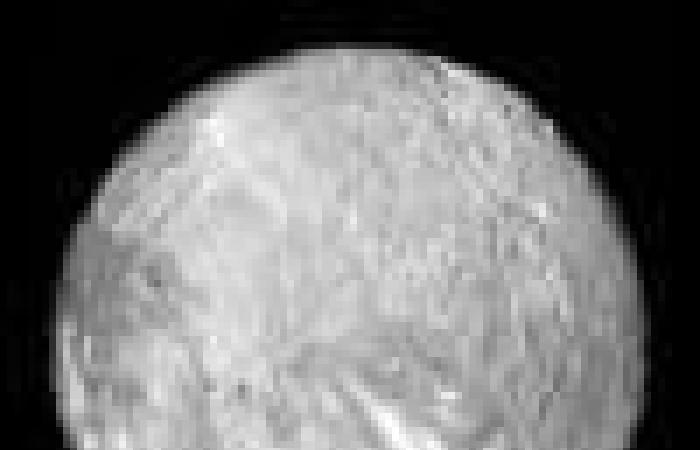⇧ [VIDÉO] You might also like this partner content
On July 21, NASA’s Perseverance Rover discovered a rock fragment on the edge of an ancient river valley named Neretva Vallis. This fragment, nicknamed “Cheyava Falls”, is considered the most valuable sample recovered from the Red Planet so far. However, the rover recently encountered a new enigma at the Serpentine Rapids site. According to NASA, these white, black and greenish spots located on a fragment of the Malgosa Ridge could indicate interaction with water in the past.
For almost four years, the Perseverance rover has continued its methodical exploration of the complex environment of Mars. Its mission is to collect samples to study the geological past of the Red Planet while looking for possible traces of previous life. Recently, NASA released images captured by the rover in August with its Watson camera from the Sherloc instrument. Watson is used to take close-up images of rocks and surface textures.
These images were taken during the rover’s climb to the top of Jezero Crater. While stopping at the Serpentine Rapids site, the robot spotted vibrant red rocks that piqued the interest of the science team. To analyze the properties and composition of these rocks, the rover used an abrasive tool to clear an intact surface on a rock outcropping called “Wallace Butte”. This revealed a 5cm diameter spot with a striking mix of colors: white, green and black. “ One of the biggest surprises for the team was the presence of dull green spots in the abrasive zone, consisting of dark hearts surrounded by light green fuzzy edges “, the team said in a statement.
An invitation to dream, ready to be worn.
A potential bacterial involvement
On Earth, these rock formations, called “redbeds,” are common — especially in Texas and Oklahoma. The shades of green and red result from a chemical reaction, when iron-enriched water seeps into the layers of rock. Iron, as it oxidizes, is transformed into Fe2+ ion (its reduced form). This chemical process, which results in the reduction of iron, often involves bacteria. The greenish stains could also come from the decomposition of potential organic matter.
See also
On Mars, however, the composition of these spots remains a mystery for the moment. The team says previous findings suggest these greenish spots could form from sediment, changing the composition of the rock. The researchers also hypothesize the participation of iron and sulfur. Unfortunately, the constraints of the field prevented a more in-depth analysis to elucidate this mystery. Regardless, the rover continues its ascent toward the top of Jezero Crater, where the team hopes to make a similar discovery.







